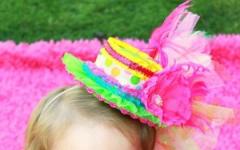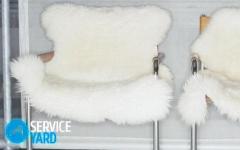Solin Anton Evgenievich
- Presentation "New Year tree" (what kind of tree can replace a living forest beauty without damaging our nature)
- Essay by a student of Municipal Educational Institution Secondary School r.p. Suleya Solin Anton Evgenievich.
Download:
Preview:
To use presentation previews, create a Google account and log in to it: https://accounts.google.com
Slide captions:
Creative project: “New Year tree”. Completed by: Solin A.E. Head: Bolsunova N.N. Suleya 2009
The New Year tree is an integral attribute of the New Year celebration in Russia, the post-Soviet space and in Christian countries. The Christmas tree is an attribute of the Christmas celebration. The New Year tree is a coniferous tree decorated with garlands, glass and plastic toys, candles and sweets. Installed during the New Year holiday in homes or on the street.
History The Christmas or New Year tree is a form of display of the most ancient symbol of humanity - the World Tree, especially common among the Indo-European peoples. Already in our era in Europe, they began to decorate the Christmas tree for Christmas: with apples, cookies, and lit candles.
There is a version that the first New Year tree was placed in the square of the city of Céleste in Alsace in 1521. The first Christmas tree decoration - a glass ball - appeared in Saxony in the 16th century. Peter I brought the custom of celebrating the New Year to Russia from Germany; The first New Year holidays in Russia were organized, according to the royal decree, in 1700. The custom of celebrating Christmas with a Christmas tree was finally established in the middle of the 19th century. In 1927, during the anti-religious campaign that began, Christmas ceased to be an official holiday, and the Christmas tree was declared a “religious relic.” However, before the onset of 1936, the tree was allowed again, but as a New Year's tree.
New Year's tree in the light of Russian and Christian traditions Among the ancient Slavs, the spruce symbolized death. . And among the Orthodox, the spruce enjoyed an unkind reputation as a refuge of evil spirits: “They crowned spruce trees around, and the devils sang.” The expression “tree-stick” was a hidden curse, cursing. It was customary to put a Christmas tree on a tavern, which is where the popular expression came from: “to go under the tree” (that is, to a tavern)
The process of “Christianization” of the Christmas tree did not go so smoothly in Russia. He met resistance from the Orthodox Church. The clergy saw in the new holiday a “demonic act,” a pagan custom that in no way resembled the birth of the Savior, and in addition, a custom of Western origin. Today, the dark symbolism of spruce as the “tree of death” is reminiscent of the funeral custom, when spruce branches are thrown in front of the coffin of the deceased on the way to the cemetery. You can also see spruces on Red Square near the Lenin Mausoleum and the Kremlin wall, where famous Soviet figures are buried
The New Year tree also signifies a festive event - a concert at which the New Year is celebrated. For the first time, holidays for children in the Kremlin with this name began to be held during the reign of Stalin on New Year’s Day 1935, when the custom, previously persecuted by the Soviet authorities as “religious,” was officially restored. Nowadays, the New Year tree is organized everywhere by both commercial and government agencies, including for commercial purposes.
Some models of unusual Christmas trees! Knitted Christmas tree A giant Christmas tree, 10 meters high, is made from several thousand knitted sweater sleeves. The top is topped with a knitted white angel. About a thousand craftswomen in Great Britain aged from 4 to 96 years worked to create the Christmas tree. They sent their knitting to the charity's appeal. The tree helped raise several thousand dollars.
Mountain Dew Christmas tree It took a fan three months to create a Christmas tree out of cans of the soft drink. That's how much he had to drink soda to accumulate enough cans. Installation took four days. Mountain Dew's red and green signature color scheme perfectly matches the generally accepted New Year's colors, and the lights of the Christmas tree garland reflect beautifully from the metal sides of the empty container.
Pumpkin tree The attraction at Tokyo Disneyland is based on the cartoon “The Nightmare Before Christmas”. An ordinary green Christmas tree would probably stand out from the general style and scary atmosphere, the Japanese thought. And so they created a tree of pumpkins with faces - an indispensable attribute of Halloween. In this way, two holidays were mixed, and the “Christmas tree” turned out to be memorable.
Last year, Singapore-based jeweler Shoo Kee created this Christmas tree using 21,798 diamonds totaling 913 carats and 3,762 crystal beads. The tree looked like a million dollars (and cost no less).
Preview:
I really feel sorry for the Christmas tree!
In the first days of each new year, we witness the same unsightly picture: hundreds of discarded Christmas trees appear in our yards. Just yesterday, forest beauties decorated houses. The Christmas trees stood in a prominent place, they were carefully decorated with toys and tinsel, children walked around the green beauties in round dances, gifts “from Santa Claus” were placed under them
Today, citizens part with their old Christmas trees without much pity. Fallen and yellowed pine needles fill courtyards and garbage dumps. Gliding out of windows, stuck in a snowdrift or deliberately stuffed into garbage containers - this is how forest beauties set out on their final journey. Heaps of crumbling spruce skeletons near the yard trash cans, on which forgotten streamer rings and scraps of “rain” dangle lonely - a sad picture of every new year.
After some time, the remains of the festive fun will be picked up by public utility vehicles. They will be taken to a landfill along with regular household waste. And then this symbol of noisy holidays will turn into charred remains, smoke and soot.
This is how, year after year, thousands of cubic meters of valuable wood in Russia are carelessly turned into useless scrap. But a better use could be found for them.
Every year, the Russian Greenpeace website publishes an article on how to minimize economic losses during the winter celebrations. There are many different options available: get an artificial Christmas tree, make a composition from live spruce paws, buy a Christmas tree in a pot
or even replace the tree, for example, with a small ikebana made of lacquered silver-plated cones. If you do buy a Christmas tree, then after the holidays you should cut it into pieces and take it to the dacha as fuel.
Unfortunately, only a few follow the advice of the world environmental organization. We, unlike many other civilized countries, do not have a Christmas tree recycling program.
In European countries, they learned to benefit from the green symbols of the New Year a long time ago. Western municipalities use alternative energy sources for a variety of purposes. For example, in Sweden, New Year's trees, plus some types of holiday paper and wood packaging, are recycled and then burned in small city boiler houses. Thanks to this technology, more than 13% of Swedes receive heat and hot water.
In Germany, they learned to profit from the Christmas trees that survived the holiday watch by making wooden national butter knives from them. Then the Germans sell this curiosity to tourists for a lot of money.
In Vienna, after the New Year holidays, 460 sites for receiving Christmas trees are open every day and around the clock in all areas of the city. All sites are equipped with signs, Christmas trees are accepted free of charge. All coniferous trees are put into circulation. They are crushed and turned into fuel briquettes. Last year, 670 tons of old Christmas trees were collected in the Austrian capital.
In the USA there is the American Christmas Tree Association, formed in 1935. There, the wood is reused as wood products, paper, and even cat litter. In New York, old trees are crushed into sawdust, which is later sprinkled on paths in city parks.
In the Netherlands, after noisy holidays are over, Christmas trees are taken to zoos. Then they are dealt with... by elephants and camels, for whom coniferous branches are a real delicacy.
And in Russia, private enterprises are already being created that are engaged in the comfortable disposal of Christmas trees. They are used for boiler houses operating on wood waste. There are special wood crushers that allow you to process Christmas trees into compost or shavings for packaging. There are innovators who propose using lush New Year's beauties in the chemical industry. Experts say that they make excellent wood vinegar. Since Soviet times, for industrial purposes, holiday trees have been used to make particle boards (chipboards) and grave wreaths.
Here in Valdai, as in almost the entire country, old Christmas trees are taken to the city landfill. This is very sad. Environmentalists have been convincing people to buy artificial Christmas trees for a long time.
Indeed, why do people put up live Christmas trees? Apart from the pleasant pine aroma for a couple of days, there is nothing more interesting about this habit. After the holiday, a bunch of fallen needles grow on the floor, and the need arises to put the tree somewhere. Many people simply leave it in the snowdrifts, and by the end of the New Year holidays, the entire landscape around the yard is “decorated” with dead trees.
What's the point of cutting down a living tree so that it can stand in an apartment for a week or two and then be thrown into the trash? Yes, it's a holiday. Yes, it's pleasing to the eye. But lush artificial trees can also please the eye - shiny, of different sizes, and durable, without falling needles, for every taste. They may be more expensive, but you can have one for the rest of your life. And your favorite artificial Christmas tree can be passed down from generation to generation. Eventually it will become a family heirloom.
How many Christmas trees are cut down every year across the country for a few days of dubious pleasure? One family can destroy up to 70 trees in a lifetime! How many families like this are there in Russia?! It turns out that buying an artificial Christmas tree is beneficial not only for you and your children, but also for the country!
Another option is beginning to take root in Russian spaces. Recently, in large cities you can buy a live Christmas tree in a tub. Such trees are grown in special nurseries (mainly in Denmark). A Christmas tree in a pot can serve as a decoration for many years. Well, if you’re tired of it, you can “return it to nature” by planting it in your summer cottage or in the forest.
But it seems we are still a long way from that. And if you still had a live spruce this year, do not rush to part with it. Herbalists and ecologists actively advise that before taking the Christmas tree to the trash container, be sure to collect its needles. After all, an infusion of spruce needles is very useful for neuritis and neuralgia, for diseases of the heart, respiratory system, mouth, ear, throat, nose, gastric and duodenal ulcers, cystitis, urolithiasis, female and male diseases, infectious processes, including flu, colds, etc.
Slide 2
The New Year tree is an integral attribute of the Russian New Year celebration.
In most countries of the world, a Christmas tree is an attribute of Christmas celebration. The New Year tree is a coniferous tree decorated with garlands, glass and plastic toys, candles and sweets. Installed during the New Year holiday in homes or on the street.
Slide 3
A little bit of history
The first Christmas tree was installed in Riga. Proof of this is evidenced by documents found in the Riga archives and the oldest Christmas tree decoration in the world. The birth date of the Christmas tree can be considered 1510.
Slide 4
Christmas tree...
A New Year tree can also represent a festive event - a concert (most often for children) at which the New Year is celebrated. With the entry into the era of television, the New Year tree began to be called some holiday television programs broadcast during the New Year celebration.
Slide 5
A little bit of history
For the first time, holidays for children with this name began to be held in the Kremlin on New Year 1935. Initially, these holidays were held for a small circle of children. But over time, throughout Russia, on the eve of the New Year holiday and for some time after, many holiday concerts for children began to be held with the constant characters Father Frost and the Snow Maiden.
Slide 6
The custom of decorating a Christmas tree
By the beginning of the 17th century, the custom of decorating the New Year tree had firmly become fashionable. In 1815, toys made of wood, tin and tin appeared on the forest beauty. Craftsmen gilded fir cones and covered empty egg shells with a thin layer of hammered brass. Fashion changed. Multi-colored lanterns and baskets began to be imported from the Asian hinterlands to Europe.
Slide 7
The custom of decorating a Christmas tree
But the imagination of German glassblowers was ahead of everyone: birds, Santa Clauses, jugs, cones, fragile amphorae and pipes... Women painted products with gold and silver dust. A bright, decorated Christmas tree, so popular before 1900, at the turn of the century began to be considered a sign of bad taste; it was replaced by a strict, stylish tree in silver and white tones.
Slide 8
An interesting fact is that Christmas tree decorations, history, politics and art are interconnected. You can “read” the history of the country from toys. To mark Pushkin’s anniversary, sets of toys depicting characters from the poet’s works were released. During World War II, the most popular toys were paratroopers.
Slide 9
During Stalin's time - Christmas tree hockey players and circus characters. In the era of Khrushchev - vegetables and fruits. In the 60s - watches, astronauts, corn, Cipollino. In the 80s - athletes.
Slide 10
Today, a timeless classic is in fashion: decorating a spruce tree with New Year's balls of two colors that match each other (blue and silver, red and gold, toys the color of baked milk) and the same size. Various bows tied to spruce branches are in fashion. Some people love fashionable, store-bought jewelry, but somewhere the tradition of making toys with their own hands has been preserved...
Presentation for preschoolers 6 - 7 years old “What is New Year?
What is New Year?
It's the other way around:
Christmas trees are growing in the room,
Squirrels don’t gnaw cones,
Hares next to a wolf
On a prickly tree!
The rain is also not easy,
It's golden on New Year's Day,
It shines as much as it can,
Doesn't wet anyone
Even Santa Claus
No one's nose stings.
E. Mikhailova
Where did the custom of celebrating the New Year come from?
The history of this wonderful holiday dates back at least 25 centuries. This custom was first born in Mesopotamia (Mesopotamia). Here, as well as in the lower Nile valley, civilization was first born at the end of the 4th millennium BC. It was here, according to scientists, that the New Year began to be celebrated for the first time (in the third millennium).
Traditions of celebrating the New Year in Russia.
The traditions of celebrating the New Year in Russia include such attributes as: a Christmas tree, a New Year's table, Santa Claus, fireworks, and mass celebrations.
On the night from December 31 to January 1, it is customary for every family to set a festive table. As a rule, there are invariably three components: Olivier salad, champagne and tangerines.
In Russia, it is customary to sit down at the festive table around 11 pm to “send off” the old year.
At approximately 23:55, the president of the country speaks on all central channels, he sums up some of the results of the outgoing year and wishes happiness and good luck to all residents of the country in the coming year. Then, at 23:55 on January 1, the chimes begin.
On this night you can meet people walking around the city dressed as Santa Claus. Another symbol of this holiday. Parents of children often order an artist in this image to come to their home for their beloved children.
New Year in Rus'.
In Rus', the New Year was celebrated on March 1. In the 14th century, the Moscow Church Council decided to consider September 1 as the beginning of the New Year according to the Greek calendar. In 1699, Peter I, returning from a trip to Europe, by a special decree, ordered that “from now on, summers should be counted” from January 1.
The history of the New Year tree.
The Christmas tree, an integral attribute of the winter holidays, also arrived in Russia along with Peter’s reforms. However, the “stranger” who arrived, although not immediately, took root firmly in the Russian soil - as if she had always grown here: from the branches that decorated the houses, a luxurious tree in festive decoration grew.
The most important of the guests:
-Who is wearing a smart, warm fur coat?
With a long white beard,
Comes to visit on New Year's Day,
Both ruddy and gray-haired?
He plays with us, dances,
It makes the holiday more fun!
- Santa Claus on our Christmas tree
The most important of the guests!
I. Chernitskaya
The origin story of Santa Claus.
Santa Claus became who he is thanks to the existence of a very specific and living prototype. In the 4th century, Saint Nicholas the Wonderworker lived and did good deeds in Asia Minor. The figure of this completely reliable historical character gradually became overgrown with legends and fabulous details, as a result of which a new image appeared - a kind grandfather, capable of making a child happy as soon as he turns to him with a request. In the old days, Santa Claus also brought rods along with gifts, entering the house with the words: “Are there obedient children in this house?” Nowadays, this unique element of education has almost disappeared, and every child, even the most cocky fidget, receives a treasured gift.
Snow Maiden.
At the Snow Maiden's in the morning
New Year's mountain of things to do:
Need snow fringe
She will decorate her native forest,
Bake a pie for the animals
And light the lanterns.
And then on holiday to the children
Fly in a golden carriage.
The origin story of the Snow Maiden.
Only our Father Frost has a granddaughter, Snegurochka, and she was born in Russia. The Snow Maiden is a literary character. She appeared in 1873 and at first was called not the granddaughter of Santa Claus, but a daughter. This happened thanks to Alexander Ostrovsky’s play “The Snow Maiden,” which he created based on a folk tale about a girl fashioned from snow and melted by the warm rays of the sun. Later, writers and poets turned her into a granddaughter.
The image of the Snow Maiden is a symbol of frozen waters. This is a girl (not a girl) dressed only in white clothes. No other color is allowed in traditional symbolism. Her headdress is an eight-rayed crown embroidered with silver and pearls.
Riddles for children.
Christmas tree on New Year's holiday
Calls adults and children.
All people are invited
On New Year's... (round dance).
There is noise everywhere on this holiday!
An explosion followed by cheerful laughter!
Very noisy toy
New Year's... (cracker)
Santa Claus came to visit us
With a fragile, snow-white guest.
He called her daughter.
This girl... (Snow Maiden).
It sparkles in the sky
Decorates our Christmas tree.
Will never fade
On New Year's Day... (star).
We are not sad on New Year's Day,
We are sitting under the Christmas tree
And to each other with expression
We say... (congratulations).
Thank you for your attention!!!
To use presentation previews, create a Google account and log in to it: https://accounts.google.com
Slide captions:
THE HISTORY OF A NEW YEAR'S TREE, A SNOWMAN AND A POST CARD Prepared by: teacher of computer science and ICT Serebryakova M.V.
The purpose of our work: Find out the history of the appearance of the New Year tree, snowman and postcard.
The ancient Germans believed in spirits and that spirits lived in trees. The spirits had to be appeased. And for this you need to hang gifts on the tree. The ancient Germans believed that the tree should be evergreen (representing immortality). How did the cult of spruce arise as a symbol of undying nature?
On Christmas night, all the plants went to Bethlehem to worship the baby Jesus. But only the modest northern Christmas tree stood out among them: it suddenly shone with the brilliance of hundreds of lights. It was a miracle that happened in the sky: the stars began to fall to the ground and showered the fir branches. Christmas Legend
In England - in 1841 How the Christmas tree conquered European countries In 1819 - Hungary 1820 - New Year's tree in the Czech Republic
When did the Christmas tree reach Russia? Among the ancient Slavs, the New Year began not in winter, but in spring (March). And they met him not with a Christmas tree, but with a birch tree.
In 1699, Peter I issued a decree according to which January 1 was considered the beginning of the year. It was also ordered to launch rockets, light fires and decorate the capital with pine needles on New Year's Eve.
However, after the October Revolution of 1917, the tree was banned in our country (like the Christmas tree).
In 1935, they decided to revive the old custom so that the New Year tree would become a wonderful entertainment for the children of workers and peasants.
The first New Year tree was erected on Red Square in Moscow in 1954. Since then it has become a good tradition.
He appeared in the yard in cold December. Clumsy and funny, standing by the skating rink with a broom. Our friend is used to the winter wind...
Snowmen come in both big and small, kind and funny, with carrots instead of noses and an old bucket on their heads; they are born, as if by magic, in city and village courtyards, lovingly molded and rolled by the palms of children and adults.
Only in the 19th century did the snow creatures “get older” and soon became an indispensable attribute of Christmas and New Year. The first snowmen were portrayed as evil, ferocious snow monsters of impressive size. This is no coincidence, because in those ancient times, merciless winters with severe frosts and dank blizzards brought a lot of trouble.
In Europe, snowmen were always made next to houses, generously decorated with garlands and household utensils, wrapped in scarves, and given branchy brooms.
The Russian word "postcard" is an "open letter", a letter that can be sent without an envelope, open, and anyone can read it. These open letters were the cheapest type of postal communication and were originally simple white cards without designs. The first cards were sent specifically for Christmas in England or France back in the 18th century.
Until the mid-19th century, postcards were usually made by hand.
As throughout the world, the first postcards in Russia were dedicated to Christmas and New Year.
At first, Russian postcards were copies of foreign ones and were made by hand; later, artists began to depict the features of life and traditions of Russia. Then postcards began to be printed in factories.
Thank you for your attention!!!
The history of the New Year tree. The New Year tree is an integral attribute of the New Year celebration in Russia. In most countries of the world, the tree is an attribute of the Christmas celebration (Christmas tree). The Christmas tree is a coniferous tree. In Europe it is predominantly fir, while spruce or pine are alternatives in Russia, decorated with garlands, glass and plastic toys, candles and sweets.
A spruce tree is installed during the New Year holiday in houses or on the street. A Christmas or New Year tree is a form of display of one of the ancient symbols of humanity of the World Tree, the Cosmic Axis, especially common among the Indo-European peoples. Already in our era in Europe, they began to decorate the Christmas tree for Christmas: with apples, cookies, and lit candles.

There is a version that the first New Year tree was placed in the square of the city of Céleste in Alsace in 1521. The first Christmas tree toy, a glass ball, appeared in Saxony in the 16th century. The custom of celebrating the New Year was brought to Russia from Germany by Peter I; The first New Year holidays in Russia were organized, according to the royal decree, starting in 1700. The custom of celebrating Christmas with a Christmas tree was finally established in the middle of the 19th century.

In 1927, during the anti-religious campaign that began, Christmas ceased to be an official holiday, and the Christmas tree was declared a “religious relic.” However, before the onset of 1936, on the initiative of Pavel Postyshev, the tree was again allowed as a New Year's tree.

Initially (according to the Christian legend of St. Boniface, who predicted that the “fir of Christianity” would grow on the roots of the felled oak of paganism), and in most cases at the present time, the Christmas tree in Europe is the fir. Spruce is the most similar substitute in the absence of a "real" tree. Spruce is rarely used for Christmas trees in the Western Hemisphere (the Americas have a largely Christian population and a widespread Christmas tree tradition), where the "Christmas fir" is sometimes replaced by pine, which has longer needles and is "fluffier".

One of the main disadvantages of spruce as a holiday tree is that it quickly crumbles when it dries, which is why it ceases to be a symbol of eternal life. Due to the unavailability of fir in central and western Russia, a similar spruce (in former times, mainly European/Norwegian spruce, which is still the cheapest “Christmas tree”) has become almost the only tree at Christmas holidays.


On New Year's Day, the house was decorated with branches of plum, apple and cherry trees, which were placed in water in such a way that they would bloom for Christmas. Peter I made an attempt to introduce in Russia, among other German customs, the decoration of houses with spruce branches, but this was not successful. A public Christmas tree in the capital (St. Petersburg) was organized only in 1852. For comparison: in France in 1840, in England in 1841. This was due to the “import” of noble German brides (and grooms) from small German principalities, who upon arrival established their own rules at European royal courts. (Material from Wikipedia)

The tradition of celebrating the New Year with a Christmas tree appeared in Russia, as already mentioned, under Peter I. On December 15, 1699, to the beat of drums, the royal clerk announced the will of the king to the people: that as a sign of a good beginning and the beginning of a new century, after thanksgiving to God and prayer singing in the church it was ordered “to make some decorations from trees and branches of pine, spruce and juniper along the large thoroughfares, and to noble people in front of the gates.
And for the poor people (i.e., the poor), at least put a tree or a branch over the gate. And so that it arrives by the 1st of 1700 of this year; and that decoration of January (i.e. January) should stand until the 7th day of the same year. On the first day, as a sign of joy, congratulate each other on the New Year, and do this when the fiery fun begins on Red Square and there is shooting.”
After the death of Peter I, they stopped putting up New Year trees. Only tavern owners decorated their houses with them, and these trees stood on taverns all year round, hence their name “stick-trees”. New Year's festivities and the tradition of putting up Christmas trees were revived under Catherine II. And they began to decorate Christmas trees only in the middle of the 19th century.
In the old days, the Christmas tree was decorated with various delicacies: nuts in bright wrappers, sweets and even vegetables. Wax candles burned on the branches, which then gave way to electric garlands. And shiny balls appeared relatively recently, about a hundred years ago.









